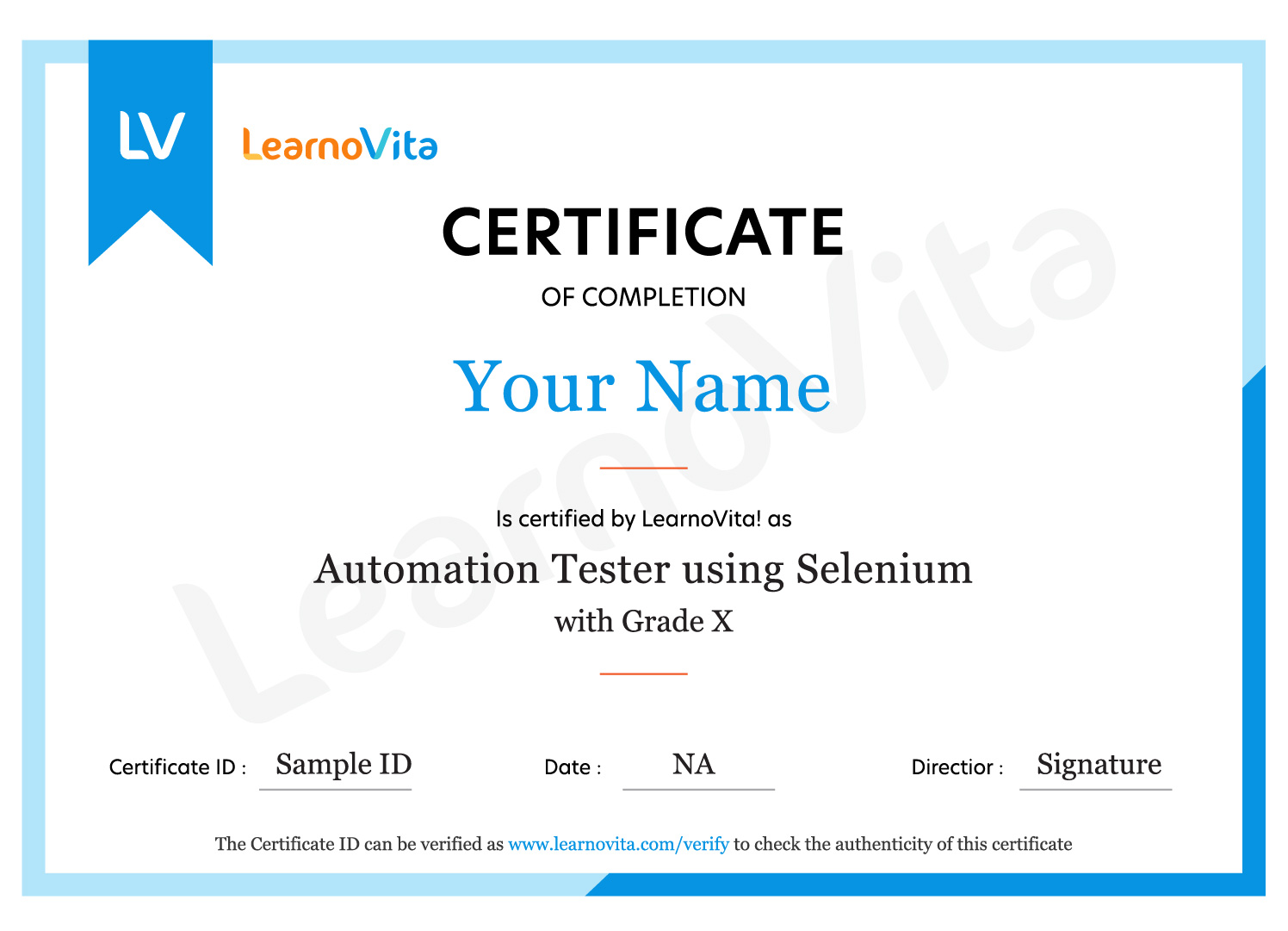Online Classroom Batches Preferred
Weekdays Regular
(Class 1Hr - 1:30Hrs) / Per Session
Weekdays Regular
(Class 1Hr - 1:30Hrs) / Per Session
Weekend Regular
(Class 3hr - 3:30Hrs) / Per Session
Weekend Fasttrack
(Class 4:30Hr - 5:00Hrs) / Per Session
No Interest Financing start at ₹ 5000 / month
Top Skills You Will Gain
- OS Fundamentals
- Network Concepts Electronics
- Microprocessor, Recovery, Backup
- Assembling, Troubleshooting
- C Programming
- Server Administration
- Linux Administration
- Database Administration
Hardware & Networking Course Key Features 100% Money Back Guarantee
-

5 Weeks Training
For Become a Expert -

Certificate of Training
From Industry Hardware & Networking Experts -

Beginner Friendly
No Prior Knowledge Required -

Build 3+ Projects
For Hands-on Practices -

Lifetime Access
To Self-placed Learning -

Placement Assistance
To Build Your Career
Top Companies Placement
The Computer hardware engineers are responsible for the hardware configuration of a computer. They renew systems by advancing the components layout, review, and modernize computer hardware. Computer hardware engineers possess high-level competencies, such as confirming the production and assembly of archetypes and are often rewarded with substantial pay raises as shown below.
- Designation
-
Annual SalaryHiring Companies
Hardware & Networking Course Curriculam
Trainers Profile
In LearnoVita you will learn to implement and design network and cyber security , network maintenance and how to set up operational systems , devices and cloud computing systems . LearnoVita trainers in available for Hardware & Networking Course including 24/7 live support.
Pre-requisites
Pre-Requisites: C or Java programming , Course in algorithms , Course in probability .
Syllabus of Hardware & Networking Course in Pune Download syllabus
- Features of Hardware & Networking
- Simple
- Secure
- Portable
- Robust
- Multithreading
- Platform-Independent
- Distributed.
- Dynamic
- New Features of Hardware & Networking 8
- Introducing Hardware & Networking Environment
- Hardware & Networking Development Kit
- Hardware & Networking Platforms
- Hardware & Networking Virtual Machine
- Hardware & Networking API
- Hardware & Networking Programs
- Installing Hardware & Networking
- What about CLASSPATH?
- Hardware & Networking’s Reserve Words
- Starting a Hardware & Networking program
- Line 1—public class App
- Line 2—public static void main(String[] args)
- Line 3—System.out.println(“Hello from Hardware & Networking!”);
- Compiling Code 15
- Compiling Code: Using Command-Line Options
- Cross-Compilation Options
- Compiling Code: Checking for Deprecated Methods
- Running Code
- Running Code: Using Command-Line Options
- Commenting Your Code
- Importing Hardware & Networking Packages and Classes
- Finding Hardware & Networking Class with CLASSPATH
- Summary
- Variables
- Data Typing
- Arrays
- Strings
- What Data Types are Available?
- Creating Integer Literals
- Creating Floating-Point Literals
- Creating Boolean Literals
- Creating CharLearnoVitar Literals
- Creating String Literals
- Creating Binary Literals
- Using Underscores in Numeric Literals
- Declaring Integer Variables
- Declaring Floating-Point Variables
- Declaring CharLearnoVitar Variables
- Declaring Boolean Variables
- Initializing Variables Dynamically
- Conversion between Data Types
- Automatic Conversions
- Casting to New Data Types
- Declaring One-Dimensional
- Creating One-Dimensional Arrays
- Initializing One-Dimensional Arrays
- Declaring Multi-Dimensional Arrays
- Creating Multi-Dimensional Arrays
- Initializing Multi-Dimensional Arrays
- Creating Irregular Multi-Dimensional Arrays
- Getting an the Length of an Array
- Understanding General Form of Static Import
- Importing Static Members
- The String Class
- Getting String Length
- Concatenating Strings
- Getting CharLearnoVitars and Substrings
- Searching For and Replacing Strings
- Changing Case in Strings
- Checking for Empty String
- Formatting Numbers in Strings
- The StringBuffer Class
- Creating StringBuffers
- Getting and Setting StringBuffer Lengths and Capacities
- Setting CharLearnoVitars in String Buffers
- Appending and Inserting Using StringBuffers
- Deleting Text in StringBuffers
- Replacing Text in String Buffer
- Using the Wrapper Class
- Autoboxing and Unboxing of Primitive Types
- Learning the Fundamentals of Varargs Methods
- Overloading Varargs Methods
- Learning the Ambiguity in Varargs Methods
- Using Non-Reifiable Formal Parameters
- Operators
- Conditionals
- Loops
- Operator Precedence
- Incrementing and Decrementing (++ and --)
- Unary NOT (~ And !)
- Multiplication and Division (* and /)
- Modulus (%)
- Addition and Subtraction (+ and -)
- Shift Operators (>>, >>>, and <<)
- Relational Operators (>, >=, <, <=, ==, and !=)
- Bitwise and Bitwise Logical AND, XOR, and OR (&, ^, and /)
- Logical (&& and ||)
- The if-then-else Operator
- Assignment Operators (= and [operator]=)
- Using the Math
- Changes in the Math Class
- Class StrictMath
- Comparing Strings
- The if Statement
- The else Statement
- Nested if
- The if-else Ladders
- The switch Statement
- Using Strings in switch Statement
- The while Loop
- The do-while Loop
- The for Loop
- The for-each Loop
- Supporting for-each in Your Own Class
- A (Poor) Solution
- Significance of for-
- Nested Loops
- Using the break Statement
- Using the continue Statement
- Using the return Statement
- Summary
- The Control Overview of a Class
- Working with Objects
- Working with Methods
- Defining Default Methods
- Working with Constructors
- Using Default Constructor
- Using Parameterized Constructors
- Exploring Packages
- Studying the Types of Packages
- Importing Packages
- Using Access Specifiers
- Working with Streams API
- Stream API Overview
- Collection and Stream
- Commonly Used Functional Interfaces in Stream
- Hardware & Networking.util.Optional
- Aggregate Operations
- Working with Time API
- Understanding Encapsulation
- Understanding Abstraction
- Understanding Inheritance
- Understanding the final Keyword
- Preventing Inheritance
- Declaring Constant
- Preventing Method Overriding
- Implementing Interfaces
- Working with Lambda Expressions
- Method References
- Using Lambda Expressions
- Implementing Abstract Classes and Methods
- Difference between Abstract Classes and Interfaces
- Implementing Polymorphism
- Understanding the Static Polymorphism
- Understanding the Dynamic Polymorphism
- Summary
- Streams, Readers and Writers
- Essentials in NIO
- Buffers
- Channels
- Charsets and Selectors
- Enhancements in NIO with Hardware & Networking 8
- The Path Interface
- The Files Class
- The Paths Class
- The File Attribute Interfaces
- The FileSystem Class
- The FileSystems Class
- The FileStore Class
- Prospects of NIO
- Working with Streams
- The InputStream Class
- The OutputStream Class
- The ByteArrayInputStream Class
- The ByteArrayOutputStream Class
- The BufferedInputStream Class
- The BufferedOutputStream Class
- The FileInputStream Class
- The FileOutputStream Class
- Working with the Reader Class
- Working with the Writer Class
- Accepting Input from the Keyboard with the InputStreamReader Class
- Working with the OutputStreamWriter Class
- Working with Files
- Using the File Class
- Using the FileReader Class
- Using the FileWriter Class
- Working with the RandomAccessFile Class
- Working with CharLearnoVitar Arrays
- Using the CharArrayReader Class
- Using the CharArrayWriter Class
- Working with Buffers
- Using the BufferedReader Class
- Using the BufferedWriter Class
- Working with the PushbackReader Class
- Working with the PrintWriter Class
- Working with the StreamTokenizer Class
- Implementing the Serializable Interface
- Working with the Console Class
- Working with the Clipboard
- Working with the Printer
- Printing with the Formatter Class
- Using the System.out.printf() Method
- Using the String.format() Method
- Formatting Dates Using the String.format() Method
- Using the Hardware & Networking.util.Formatter Class
- Scanning Input with the Scanner class
- Summary
- Exception Handling Techniques
- Rethrowing Catched Exception with Improved Type Checking
- Built-in Exceptions
- User-Defined Exceptions
- Summary
- Using Threads in Hardware & Networking
- Life Cycle of a Thread
- Synchronization of Threads
- Multithreaded Custom Class Loader
- Getting the Main Thread
- Naming a Thread
- Pausing a Thread
- Creating a Thread with the Runnable Interface
- Creating a Thread with the Thread Class
- Creating Multiple Threads
- Joining Threads
- Checking if a Thread Is Alive
- Setting Thread Priority and Stopping Threads
- Synchronizing
- Communicating between Threads
- Suspending and Resuming Threads
- Creating Graphics Animation with Threads
- Eliminating Flicker in Graphics Animation Created Using Threads
- Suspending and Resuming Graphics Animation
- Using Double Buffering
- Simplifying Producer-Consumer with the Queue Interface
- Implementing Concurrent Programming
- Simplifying Servers Using the Concurrency Utilities
- Knowing Various Concurrency Utilities
- Learning about the Hardware & Networking.util.concurrent Package
- Learning about the Hardware & Networking.util.concurrent.locks Package
- Learning about the Hardware & Networking.util.concurrent.atomic Package
- Summary
- The Collection Interfaces
- The Collection Classes
- The Map Interfaces
- The Map Classes
- Collections Framework Enhancements in Hardware & Networking SE 8
- Using the Collection Interface
- The Queue Interface
- The List Interface
- The Set Interface
- The SortedSet Interface
- Using the Collection Classes
- Using the Comparator Interface
- Using the Iterator Interface
- Using the ListIterator Interface
- Using the AbstractMap Class
- Using the HashMap Class
- Using the TreeMap Class
- Using the Arrays Class
- Learning the Fundamentals of Enumerations
- The Legacy Classes and Interfaces
- Using the Aggregate Operations
- Using the Hardware & Networking.util.function Package
- Summary
- Packages and Interfaces
- JAR Files
- The Hardware & Networking API Package
- The Hardware & Networking.lang Package
- Basics of Annotation
- Other Built-In Annotations
- Creating a Package
- Creating Packages that have Subpackages
- Creating an Interface
- Implementing an Interface
- Extending an Interface
- Using Interfaces for Callbacks
- Performing Operations on a JAR File
- Marker Annotations
- Single Member Annotations
- Summary
- What is Hardware & Networking Bean?
- Advantages of Hardware & Networking Bean
- Introspection
- Persistence
- Customizers
- Understanding Hardware & Networking Beans
- Designing Programs Using Hardware & Networking Beans
- Creating Applets that Use Hardware & Networking Beans
- Creating a Hardware & Networking Bean
- Creating a Bean Manifest File
- Creating a Bean JAR File
- Creating a New Bean
- Adding Controls to Beans
- Giving a Bean Properties
- Design Patterns for Properties
- Using Simple Properties
- Designing Patterns for Events
- Learning Methods and Design Patterns
- Creating Bound Properties
- Giving a Bean Methods
- Giving a Bean an Icon
- Creating a BeanInfo Class
- Setting Bound and Constrained Properties
- Implementing Persistence
- Using the Hardware & Networking Beans API
- Learning the Basics of an Event
- Using the Hardware & Networking Beans Conventions
- Using the Remote Notification and Distributed Notification
- Using Beans with JSP
- Summary
- Basics of Networking
- Sockets in Hardware & Networking
- Client-Server Networking
- Proxy Servers
- Internet Addressing
- Domain Name Service
- Inet4Addresses and Inet6Addresses
- The URL Class
- The URI Class
- URI Syntax and Components
- TCP/IP and Datagram
- Blackboard Assignment Retrieval Transaction
- Understanding Networking Interfaces and Classes in the Hardware & Networking.net Package
- Understanding the InetAddresses
- Caching InetAddress
- Creating and Using Sockets
- Creating TCP Clients and Servers
- Understanding the Whois Example
- Submitting an HTML Form from a Hardware & Networking Program
- Handling URL
- Using the URLConnection Objects
- Working with Datagrams
- Datagrams Server and Client
- Working with BART
- Learning about the Hardware & Networking.security Package
- Summary
- Introducing Events
- Introducing Event Handling
- Working with the Types of Servlet Events
- Developing the onlineshop Web Application
- Introducing Wrappers
- Working with Wrappers
- Summary
- Introducing JSP Technology
- Listing Advantages of JSP over Hardware & Networking Servlet
- Exploring the Architecture of a JSP Page
- Describing the Life Cycle of a JSP Page
- Working with JSP Basic Tags and Implicit Objects
- Working with Action Tags in JSP
- Exploring EL
- Using Custom Tag Library with EL Functions
- Exploring the Need of Filters
- Exploring the Working of Filters
- Exploring Filter API
- Configuring a Filter
- Creating a Web Application Using Filters
- Using Initializing Parameter in Filters
- Manipulating Responses
- Discussing Issues in Using Threads with Filters
- Summary
- Describing the Hardware & Networking EE Application Architecture
- Introducing a Design Pattern
- Discussing the Role of Design Patterns
- Exploring Types of Patterns
- Summary
- Section A: Exploring SOA and Hardware & Networking Web Services
- Overview of SOA
- Describing the SOA Environment
- Overview of JWS
- Role of WSDL, SOAP and Hardware & Networking/XML Mapping in SOA
- Section B: Understanding Web Service Specifications to Implement SOA
- Exploring the JAX-WS 2.2 Specification
- Exploring the JAXB 2.2 Specification
- Exploring the WSEE 1.3 Specification
- Exploring the WS-Metadata 2.2 Specification
- Describing the SAAJ 1.3 Specification
- Working with SAAJ and DOM APIs
- Describing the JAXR Specification
- JAXR Architecture
- Exploring the StAX 1.0 Specification
- Exploring the WebSocket 1.0 Specification
- Describing the JAX-RS 2.0 Specification
- Exploring the JASON-P 1.0 Specification
- Section C: Using the Web Service Specifications
- Using the JAX-WS 2.2 Specification
- Using the JAXB 2.2 Specification
- Using the WSEE and WS-Metadata Specifications
- Implementing the SAAJ Specification
- Implementing the JAXR Specification
- Implementing the StAX Specification
- Introduction to Hibernate
- Hibernate CRUD Operation
- Hibernate Queries and Relationships
- Mapping Relationship with Hibernate
- Introduction to Spring
- Dependency Injection, SpringBean Lifecycle, Wiring and Scope
- Introduction to Spring AOP (Aspect-Oriented Programming)
- Configuring AOP in Hardware & Networking Application using AspectJ Approach
- Spring JDBC Implementation in an Application
- Spring Hibernate Template
- Spring JDBC Transaction Management
- Spring MVC Architecture, Components, and Framework
- Spring MVC Program
Contact Us
+91 9176954999
(24/7 Support)
Request for Information
Industry Projects
Mock Interviews
- Mock interviews by Learnovita give you the platform to prepare, practice and experience the real-life job interview. Familiarizing yourself with the interview environment beforehand in a relaxed and stress-free environment gives you an edge over your peers.
- In our mock interviews will be conducted by industry best Hardware & Networking Training in Pune experts with an average experience of 7+ years. So you’re sure to improve your chances of getting hired!
How Learnovita Mock Interview Works?
Hardware & Networking Training Objectives
- Of course, yes. Hardware & Networking has a bright future and is a good career choice for engineers.
- Start enhancing your career by enrolling into Hardware and Networking course.
- Career development opportunities for Hardware & Networking developers are excellent.
- With IT skills in strong demand, deciding to become a Hardware & Networking developer can open opportunities to develop your career in both private and public sectors.
- Hardware and Networking has a wide ramge of applications in eletronics field. Hence, we can say that all electronic devices are in need of hardware and networking features.
- Certainly, yes. The course contains intense practise for the placement drive. There are plenty of questions that will be practiced.
- Each module contains intense practise works that will improve cognitive skills.
- It provides intense practise for beginners.
- It contains materials that make hardware and networking easier.
- Our institute in Pune is designed to give a hands-on approach to students in training.
- The training has been actively involved in placing students. We have consistent and growing opportunities for those who have completed the course with flying colors.
- The placement drive in Pune will give equal opportunity for all the students enrolled in this course.
- The prerequisites include basic computer and programming knowledge. Additionally, knowledge of C and C++ language is an added advantage.
- Mostly, yes. Diligent and smart work can help you to understand the concepts easier.
- Working out more problems related to the course will improve affinity towards the concept.
- Understanding the concepts of resource sharing
- Providing high relaibility
- Learning about computer organization
- Software developers
- Engineering graduates
- Students who all want to become Hardware & Networking developers
- Hardware and Networking is a growing technology.
- You'll have the responsibility of sending data between computers for communication.
Exam & Certification
Hardware & Networking Online Training / Class Room:
- Participate and Complete One batch of Hardware & Networking Training Course
- Successful completion and evaluation of any one of the given projects
- Complete 85% of the Hardware & Networking Certification Training
- Successful completion and evaluation of any one of the given projects
- Oracle Certified Associate (OCA)
- Oracle Certified Professional (OCP)
- Oracle Certified Expert (OCE)
- Oracle Certified Master (OCM)
- Learn About the Certification Paths.
- Write Code Daily This will help you develop Coding Reading and Writing ability.
- Refer and Read Recommended Books Depending on Which Exam you are Going to Take up.
- Join LernoVita Hardware & Networking Certification Training in Pune That Gives you a High Chance to interact with your Subject Expert Instructors and fellow Aspirants Preparing for Certifications.
- Solve Sample Tests that would help you to Increase the Speed needed for attempting the exam and also helps for Agile Thinking.

Recently Placed Students
Pranav Srinivas
Software Testing, CapgeminiHardware & Networking Course FAQ's
- LearnoVita Best Hardware & Networking Training in Pune will assist the job seekers to Seek, Connect & Succeed and delight the employers with the perfect candidates.
- On Successfully Completing a Career Course from LearnoVita Best Hardware & Networking Course in Pune, you Could be Eligible for Job Placement Assistance.
- 100% Placement Assistance* - We have strong relationship with over 650+ Top MNCs, When a student completes his/ her course successfully, LearnoVita Placement Cell helps him/ her interview with Major Companies like Oracle, HP, Wipro, Accenture, Google, IBM, Tech Mahindra, Amazon, CTS, TCS, HCL, Infosys, MindTree and MPhasis etc...
- LearnoVita is the Legend in offering placement to the students. Please visit our Placed Students's List on our website.
- More than 5400+ students placed in last year in India & Globally.
- LearnoVita is the Best Hardware & Networking Training Institute in Pune Offers mock interviews, presentation skills to prepare students to face a challenging interview situation with ease.
- 85% percent placement record
- Our Placement Cell support you till you get placed in better MNC
- Please Visit Your Student's Portal | Here FREE Lifetime Online Student Portal help you to access the Job Openings, Study Materials, Videos, Recorded Section & Top MNC interview Questions
- LearnoVita Certification is Accredited by all major Global Companies around the World.
- LearnoVita is the unique Authorized Oracle Partner, Authorized Microsoft Partner, Authorized Pearson Vue Exam Center, Authorized PSI Exam Center, Authorized Partner Of AWS and National Institute of Education (nie) Singapore
- Also, LearnoVita Technical Experts Help's People Who Want to Clear the National Authorized Certificate in Specialized IT Domain.
- LearnoVita is offering you the most updated Hardware & Networking certification training in Pune, relevant, and high-value real-world projects as part of the training program.
- All training comes with multiple projects that thoroughly test your skills, learning, and practical knowledge, making you completely industry-ready.
- You will work on highly exciting projects in the domains of high technology, ecommerce, marketing, sales, networking, banking, insurance, etc.
- After completing the projects successfully, your skills will be equal to 6 months of rigorous industry experience.
- We will reschedule the Hardware & Networking classes in Pune as per your convenience within the stipulated course duration with all such possibilities.
- View the class presentation and recordings that are available for online viewing.
- You can attend the missed session, in any other live batch.













